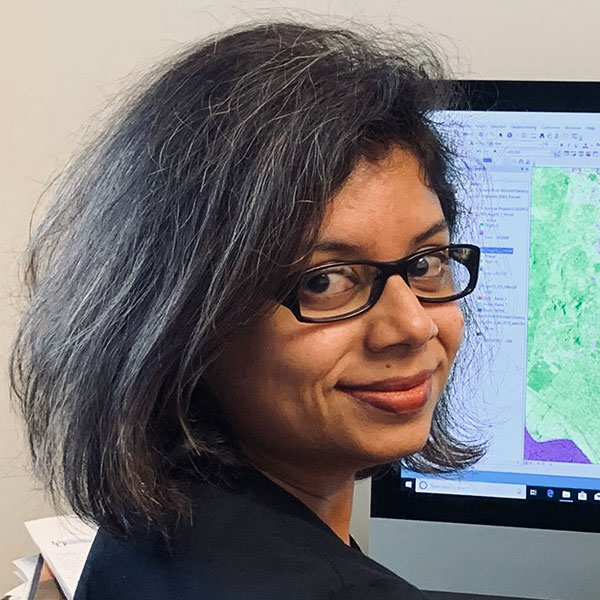Op-Ed: A Graduate Student Perspective on Geography
Editor’s Note: This essay was written for a graduate course on “Contemporary Geographic Thought,” which is co-taught by Professors Bruce Rhoads and David Wilson at the University of Illinois. Students were asked to respond to four open-ended questions: 1) How has the course shaped your perception and understanding of geography, 2) Do you see geography as a fractionated or unified discipline, 3) Why do you consider yourself a geographer, and 4) What is the relation of geography to other fields of knowledge?
I started my first semester as a geography graduate student with a geographic background comprised only of GIS and remote sensing, exclusively covering geospatial technology and its applications with little consideration for the discipline that nurtured its growth. Prior to taking this course on contemporary geographic thought, I would have dismissed references to various paradigms and worldviews, to determinism and mechanistic materialism and the quantitative revolution, as the purview of philosophy and meta-theory, relics of the irrelevant discourses of another century. I was operating under the mistaken assumption that the way things are is the way they’ve always been, and that no particular sequence of historical events was required to forge the discipline of Geography as it exists today.
As a recent undergraduate with a layperson’s understanding of modern geography, I divided the field not into traditions of physical and human – with GIS and remote sensing nestled somewhere within – but into quantitative and qualitative, or rather, what I perceived as “scientific” and “unscientific.” I fended off criticism of my choice of major by throwing the social side of things under the bus, assuring others that while there were still those who chose to study the traditional, “social studies” side of geography, I had selected the “scientific” approaches of GIS and remote sensing, and could therefore rest assured of a STEM degree. To be honest, I think I deserved a slap in the face. Instead I received the significantly gentler correction of a semester’s worth of re-education in a class on contemporary geographic thought. I came to recognize, through the course of these past 15 weeks, how incorrect my assumptions were, and how my narrow view was one which discounted the passion and investment of so many geographers of the past. While many of these iconoclasts’ paradigms have suffered the fate predicted by the Kuhnian model, it was the emergence of these paradigms and eventual concerns raised about them that paved the way for the advancement of the field. Without the contention born of Ellen Semple’s determinism, Griffith Taylor might never have suggested possibilism. Without the perceived shortcomings of these approaches, Hartshornian regionalism might never have taken hold. The paradigm of Hartshornian regionalism spurred a turn toward the quantitative revolution and the development of the spatial analytic tradition. Davis’ attractive, but empirically unsubstantiated model of landscape evolution, sowed seeds of discontent that led to engagement between physical geography and human geography during the quantitative revolution. Though perhaps only fleeting, this ephemeral alignment of paradigms allowed the two halves of geography to “touch base,” to find common ground at an unexpected intersection.
With the insights of the historical development of geography etched indelibly in my mind, I came to recognize a key idea: that the lines drawn between the various subfields of geography are not as clean as I initially thought. Human geography can be scientific, physical geography can be qualitative, and “scientific” and “quantitative” are not necessarily synonyms. There is room for, and perhaps even benefit in, the incorporation of multiple methods in a given study.
Taking into account, then, my newfound understanding of geography as a whole, the question arises as to how these differing approaches and viewpoints fit together into a single discipline. Though I would refrain from using the word fractionated because the connotation is similar to fractured – one of brokenness – I think, based on my own experiences, that I would be naïve to declare that geography is an entirely integrated field. My interests align more closely with physical geography than human, but still the nuances of some aspects of physical geography, fluvial geomorphology for example, are lost on me. Likewise, I am very much a foreigner in a seminar on the social implications of gender disparity in land ownership. Sometimes, when I tell other geographers that I use satellite imagery and computer programming to study forest disturbance, I am greeted with a blank stare or an uncertain, polite smile.
While I acknowledge that divisions exist in geography, I also argue that a better word to describe the nature of the discipline is heterogeneous. Heterogeneity, unlike fractionation, implies to me recognized differences within a cohesive whole, rather than disparate parts forced together to create some semblance of a whole. And in everything from stock portfolios to landscape ecology, heterogeneity is not a sign of weakness, but of robustness, of the capacity to absorb change and diffuse it to components best able to handle it while ensuring the survival of those components that cannot. It may be idealistic, maybe even drifting towards a sort of disciplinary socialism, to imagine that if one segment of the discipline falls on hard times, another could rescue it. An individualist society is more likely to chop off the dead limb – to disconnect the weakest link to stop it from inhibiting the whole. But if the turbulence of the past century in geography has shown anything, it’s that what exactly defines the weakest link is capricious at best. The approach at the forefront of innovation one decade might be pushed to the wayside the next. Just as in a close-knit neighborhood, where at any given moment in time neighbors who are struggling are helped by those around them, geography stands to achieve more as a heterogeneous, but unified discipline than as a set of isolated, individual components.
Critical physical geography, as discussed by Lave et al. (2014), offers a compelling argument for integration across the traditional, physical-human divide. Both biophysical and human processes shape geographic space, which necessitates the incorporation of multiple approaches. This capacity for interdisciplinary (or perhaps intersubdisciplinary) cooperation means that resources can be drawn from and shared between relevant subgroups within geography. Studies based on mixed methodologies can be artfully executed by dedicated experts, so that conclusions are derived through collaboration among specialists with multiple areas of expertise. Maintaining geography as a single discipline helps to overcome some of the pitfalls of multidisciplinary collaborations that arise from lack of communication, inconsistencies in standards and conventions, and mismatched expectations or perspectives on the purpose and objectives of a project. Geography as an admittedly heterogeneous, but united discipline – as I believe it is currently positioned – stands to make more of a mark on the world than geography split apart, however cleanly the lines might be drawn.
Stepping outside of the discipline into the context of the broader academic world, the focus becomes not on internal, but external differentiation. What makes geography different? Why study ecological remote sensing in a geography department instead of environmental science or biology? Why are transportation geographers not in urban planning, or health geographers in community health? Why is the CyberGIS lab at the University of Illinois not part of the computer science department?
I can’t speak for all those involved in this transdisciplinary tug-of-war, but I can answer for myself. To be honest, I’m not entirely certain what it is that draws me to geography instead of the various other disciplines in which remote sensing and GIS can be applied. Some part of it I will admit is opportunistic. I applied both to geography and environmental science departments for graduate school, discriminating only on the basis of the quality of the remote sensing and GIS research, rather than by department name. For a time I was torn between another university’s natural sciences program and the geography department at the University of Illinois, and I’ll admit that it was ultimately finances, familiarity, and the strength of the program – not the title of the department – that most influenced my decision.
That said, I think that no matter where my career takes me, I will always call myself a geographer. Even if only because my first classes in remote sensing and GIS were in a geography department, I can’t help but equate those fields with geography, no matter the context in which they are being applied. I think that the same could be said about any geographical approach to a problem, whether physical or human. People tend to search for a short and sweet answer to the question of what makes geography geography, and often the go-to response is “space.” From regionalism to spatial analysis to Strahler’s process paradigm, a “spatial perspective” is always the answer for what unifies geography as a discipline and distinguishes it from others. But I think that the distinctiveness of geography goes beyond that.
Just because volumes of careful explanation might be required to reason through geography’s value as a discipline doesn’t mean that it doesn’t have one. Just because other fields can use spatial statistics, remote sensing, ethnographic studies, and flow measurements doesn’t mean that geography can’t be of value in producing professionals who are well qualified to fill critical roles in the workforce. Part of the value of geography is its flexibility – the fact that geographic concepts, principles, and tools are relevant to so many different problems – and I don’t think that there’s any other discipline that can offer that specific advantage.
That, more than any other characteristic, is what attracts me to geography. While my thesis focuses mainly on an ecological problem, my interests extend far beyond this one topic. As much as there is value in specialization, there’s something thrilling about the idea that many of the skills I’m learning now could be of value in solving a variety of problems in the future. Recent developments within geography, such as the emergence of CyberGIS in support of computationally-intensive geographic analyses (Wang, 2010) or the innovations of real-time mapping and the integration of space and time (Richardson, 2013), offer new tools to address new geographic problems. I love geography because it means that I’m not compartmentalized into a single subject for the rest of my life. This flexibility is equal parts terrifying and thrilling, and from past experience I know the risk that exists in going broad and not deep – learning too many skills at the amateur level without becoming proficient in anything. Geography, I think, offers a guided method of balancing that flexibility with focus.
—Courtney Reents
Department of Geography and Geographic Information Science
University of Illinois at Urbana-Champaign
References
Lave, R. et al. (2014). Intervention: Critical physical geography. The Canadian Geographer, 58(1), 1-10.
Richardson, D.B. (2013). Real-Time Space-Time Integration in GIScience and Geography. Annals of the Association of American Geographers, 103(5), 1062-1071.
Wang, S. (2010). A CyberGIS Framework for the Synthesis of Cyberinfrastructure, GIS, and Spatial Analysis. Annals of the Association of American Geographers, 100(3), 535-557.


